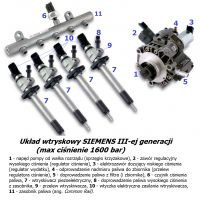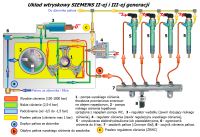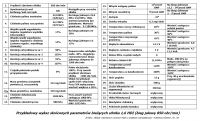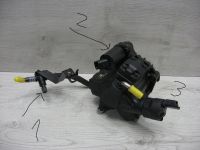Frost160 wrote: car as in topic 2.0 tdci has gone out and does not ignite. No pressure on the rail injection system siemensa generation 3. I wanted to ask what is the valve / valve (1 on the photo) on the pipe where the pump draws the fuel to be vented? The valves on the regulating pump and the flow (2-3) have any resistances? If so, what?
Below, I paste pictures with the CR III generation SIEMENS injection circuit.


What is the specific
fault code number , e.g.
P1234 ? If you provide it, you can say something more about the reasons. The translation itself is less interesting, because you could have made a mistake or twist something and diagnostics goes into the proverbial bushes.
When it comes to questions, of course, solenoid valves have some resistance, but it seems to me that it is more important to answer the question whether all
four pressures (visible in the second scheme in colors) have the correct expected value at the moment.
If the engine was driving and then suddenly turned off, the resistance on the power cables and / or contacts did not have to change.
solenoids (3 and 4 - second scheme on the left), but e.g. suddenly fell
high pressure (red) in
tray (7), measured
fuel pressure sensor (8).
This decrease could have been caused by a "spanking"
injector (5), electrical failure of the injectors, also clogging with metal filings of any of the wires
low pressure (green color),
vacuum (blue) and
transfer (yellow).
Each of the control solenoid valves, i.e.
flow regulator (3) and
pressure regulator (4).
The simplest and most banal reason for stopping the engine could be clogged
fuel filter .
fuel leakage through the resulting hole (e.g. spontaneous disconnection of any quick coupling), or
allowing air fuel circuit.
Everything concerns
high and low pressure fuel circuit .
Other reasons for stopping the engine The pressure drop to zero could have been "erroneously" shown
the fuel pressure sensor (8), although in reality the pressure was normal. The computer "scared" by the pressure sensor indication that the pressure dropped sharply - turns off the engine by stopping the sequential power supply of the injectors. "He thinks" that there is a fire risk (fuel may spill onto a hot engine). Yes it is programmed.
It also cuts off the fuel supply from the tank by closing it
expenditure regulator (3) and full opening
pressure regulator (4) for overflow "c" to the tank.
The engine can be stopped without warning by the computer if it fails while driving
GMP sensor and crankshaft rotational speed .
summarizing , disruption of each of the four pressures (and vacuum), i.e. out of range, affects the final effect, i.e. the amount of fuel delivered to the injectors. Fuel circulates in the system
connected vessels . If there is no low pressure fuel, there will be no high pressure fuel in the container. The engine stops due to lack of fuel on the injectors, and indirectly due to e.g.
Outgassing on the vacuum side (blue).
All this can be checked and detected point-by-point with an external diagnoscope capable of connecting to the injection computer via a standard 16-pin EOBD connector and downloading current parameters as in the example table below. There is an option in "brand" diagnoscopes
valve testing (adjusters, actuators) and
sensors (measuring elements).

Kitten KotBury2







